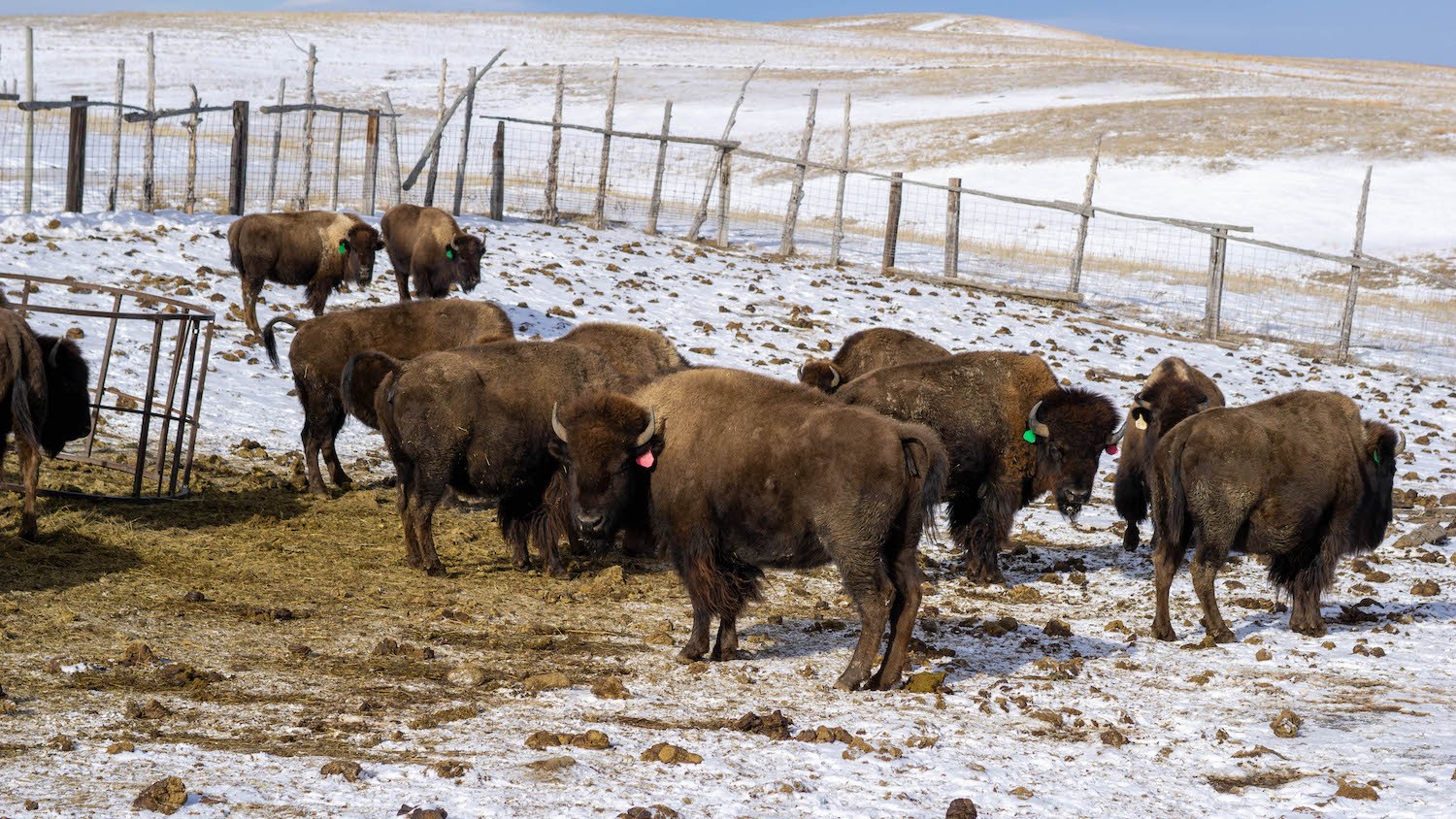
Get over the difficulties. The big news is that we have a core commodity product using ground bison. This means that the industry can now grow rapidly and lift all boats which will include native bison ranchers who need to manage these herds back onto hteir traditional range.
With this type of innovation the buffalo commons is on the way back. The majors have created the necessary commodity market that supports the steak market for high quality premium sales. You were never going to own that and by the way, you never wanted to own that unless you want to own millions in equipment somewhere else.
The point is that the native community now has a vibrant growing bison ranching industry which they can champion..
One year after Native-owned Tanka Bar had lost nearly everything, the buffalo are on their way back
01.24.2020, 8:00am
Share
Link Copied!
Save for later
https://thecounter.org/tanka-bar-niman-ranch-bison-grassfed/
This weekend, Niman Ranch and Native American Natural Foods (NANF), maker of the Tanka Bar, will announce a unique collaboration. The aim: to restore the buffalo to its revered place in Lakota society and regenerate prairie, while helping Niman create a new source for bison and organic and grass-fed beef.
Last year, The New Food Economy explored what had happened to Tanka Bar, the originator of the buffalo and berry snack bar based on an ancient indigenous recipe. The Native-owned company was small, but successful, until corporate competitor Epic Bar/General Mills, with its huge bankroll, media-attractive creation tale, and inflated sustainability story jumped into the niche.
As a result of the article, Tanka Bar’s founders say they saw sales explode in the last month of 2018, more than 300 percent in Whole Foods alone. But the sales increase had an unexpected and negative effect on the already cash-strapped company. It couldn’t keep up with demand, and eventually Whole Foods ended their relationship.
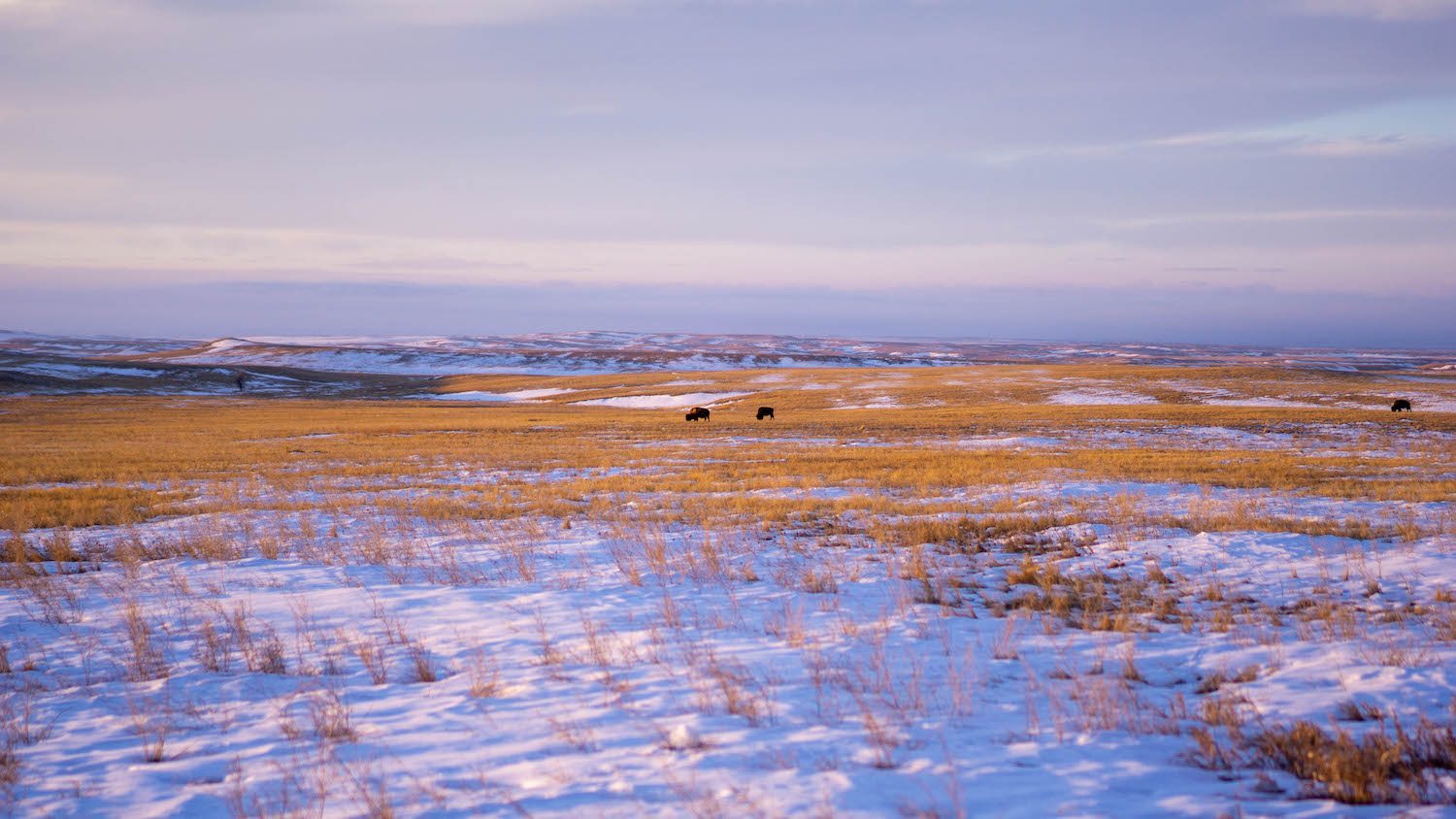
Bison graze on the Buffalo Gap National Grasslands, just north of the Pine Ridge Reservation
Arlo Iron Cloud
After it was published, the Tanka Bar story reached Jeff Tripician, at the time the general manager of Niman Ranch, a network of more than 740 independent family farmers and ranchers across the country. (He’s now the president of Perdue Premium Meats, Niman’s parent company.) Tripician reached out to Tanka Bar co-founder and president Mark Tilsen, scheduled a meeting, and drove the seven hours from Denver to the Pine Ridge Reservation in South Dakota, home of the Oglala Sioux people—and of the Tanka Bar. Since that initial session, executives at the two companies have spent nearly a year building relationships, brainstorming, and exploring options for collaboration.
In an era when much of the corporate consolidation in food and agriculture is driven either by a desire for a highly marketable story—whether true or not—or, in the case of private equity, a quick return on investment, partnerships based on mutual success and truly aligned social missions are rare.
This weekend, Niman Ranch and Native American Natural Foods (NANF), maker of the Tanka Bar, will formally announce a unique collaboration between the two companies. No money will change hands; it’s not a merger or acquisition. Instead, it’s an operational partnership. Niman Ranch will provide NANF with technical expertise in marketing, supply chain development, and distribution management, and NANF will help Niman create a new source for bison and organic and grass-fed beef.
“We’re bringing the foods back to our people and building an ecosystem, bridging the gap between the brand and the Nation.”
In addition, NANF has secured a round of financing that will allow Tanka Bar and its related entities, the non-profit Tanka Fund and Tanka Resilient Agriculture Cooperative (TRAC), a producer co-op, to explore new ways of achieving the ultimate mission: restoring the buffalo to its revered place in Lakota society and regenerating prairie, while building economic opportunities on the Pine Ridge Reservation. Tilsen calls it a “blended capital solution,” with the three legs of the NANF stool each contributing to the ultimate success of the whole organization. Chris Oliviero, Niman Ranch’s general manager, refers to it as the virtuous cycle, where the closed loop of investments, production, profits, and savings all feed each other and create a strong, thriving operation.
Dawn Sherman, NANF’s CEO, says Tanka Bar is more than just another brand marketing a product. “We’re bringing the foods back to our people and building an ecosystem, bridging the gap between the brand and the Nation. Niman Ranch is helping us keep the ecosystem going.”
“The mission is everything for these two companies,” adds Oliviero. “If we can help Tanka Bar regain their momentum, then they can take it from there.”
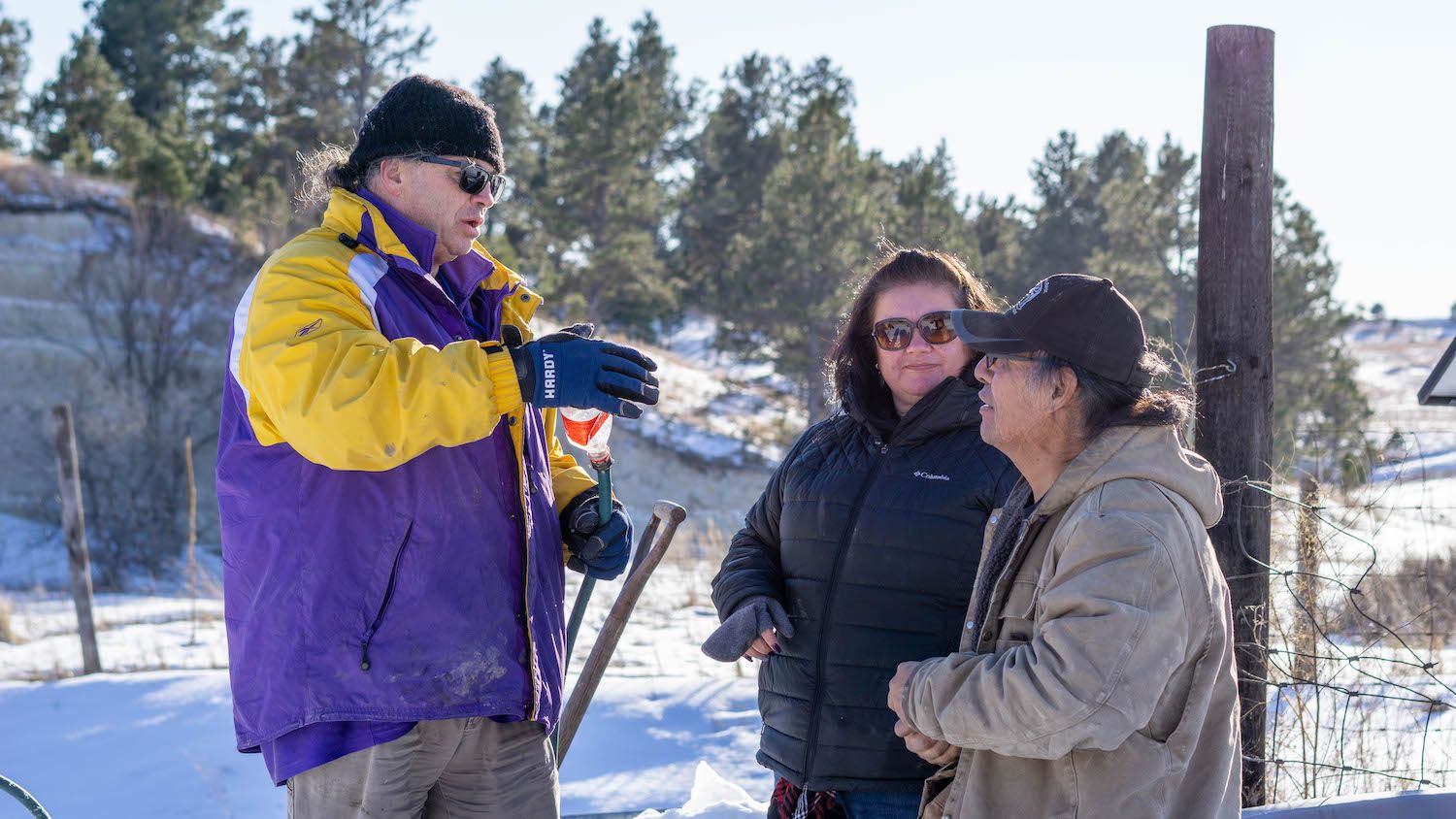
Tanka Fund helps with more than just financial support. Here, Mark Tilsen (left) and Dawn Sherman work with Ed Iron Cloud (right foreground) to rig a makeshift device that’ll help them get water from the top of a hill to the buffalo down below
Arlo Iron Cloud
The importance of the buffalo and the Tanka Bar to the Pine Ridge community can’t be overstated. In a study released early last year, the Federal Reserve Bank of Minneapolis detailed the present-day consequences of the federal government’s 19th century extermination of bison and the near-genocide of bison-reliant indigenous people. Once some of the tallest and richest people in the world, the Northern Plains tribes are now some of the shortest and poorest. Per capita income is 20 to 40 percent less than that of other Native American tribes.
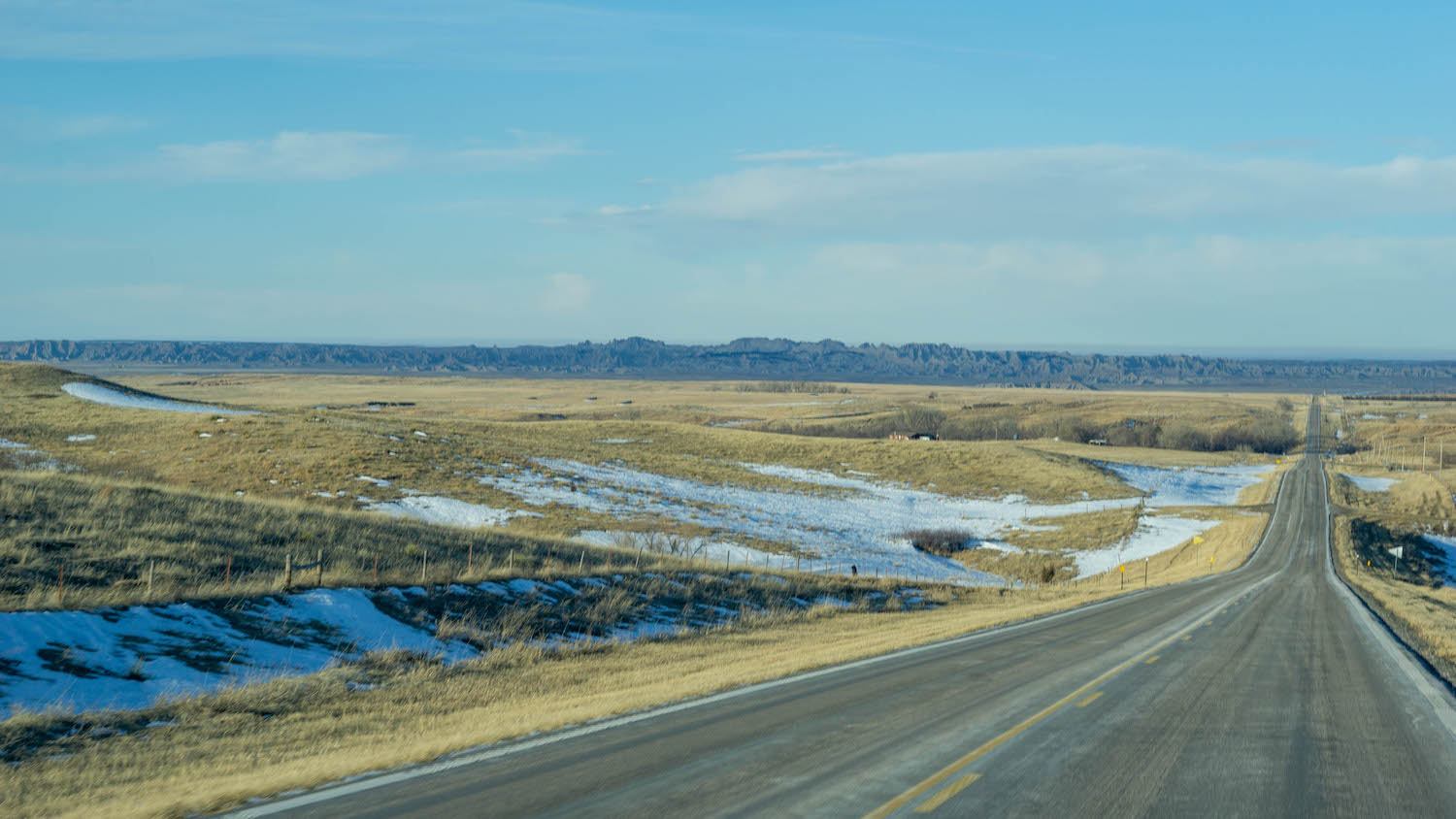
Much of the land on the Pine Ridge Reservation is leased to non-Native cattle ranchers
Arlo Iron Cloud
The Pine Ridge Reservation sprawls over 2 million acres of mostly virgin prairie. It’s an iconic landscape of the West—ragged, forbidding buttes; horizon-to-horizon sky; and miles of largely vacant, rolling grasslands. It would seem to be the perfect place to reintroduce the buffalo to its native habitat. But, as with many other things in Indian country, the situation is not so simple.
Native Americans in general capture only about 10 percent of the agricultural revenue generated on their lands.
Most of the land on Pine Ridge and its neighboring reservations is tied up in a hodge-podge of allotments, leases, and trusts overseen and administered by the federal government. Much of it is leased to non-Native cattle ranchers, and has been for generations. According to David Bartecchi, executive director of Village Earth and lead researcher for The Lakota Lands Recovery Project, Native Americans in general capture only about 10 percent of the agricultural revenue generated on their lands, based on data from the USDA Agriculture Census in 2012 and 2017. The other 90 percent goes to non-Native farmers and ranchers, a situation he terms “agricultural apartheid.”
NANF CEO Dawn Sherman and her family are a perfect example. They own allotments on several Pine Ridge parcels, but they’re not adjacent, and they’re “landlocked”—that is, leased to a third-generation, non-Native cattle rancher as part of a larger surrounding tract and inaccessible to her family. Also, as allotments have been passed down through generations, some parcels may have dozens, hundreds, or even thousands of owners. That fractionation makes the land essentially worthless in a capitalist system and precludes access for would-be tribal buffalo ranchers. Land issues aren’t unique to Pine Ridge—most of the tribal lands in the country are tied up in similar knotty situations—but Bartecchi says there’s a lack of will on both the part of the federal government and the tribes to fix it, and it makes NANF’s goal of restoring the buffalo and building a thriving bison economy on the reservation difficult, at least in the short term.
Monica Terkildsen, tribal liaison to the World Wildlife Fund, recently conducted a survey of tribal members regarding land use on the reservation. She says that, overwhelmingly, respondents want to see buffalo restored to the land, but it’s hard to define what that looks like. She’s convened a working group to deal with the politics, history, and rumors and to begin the conversation about how to bring the buffalo back. “When the buffalo come back, so will the people,” she says.
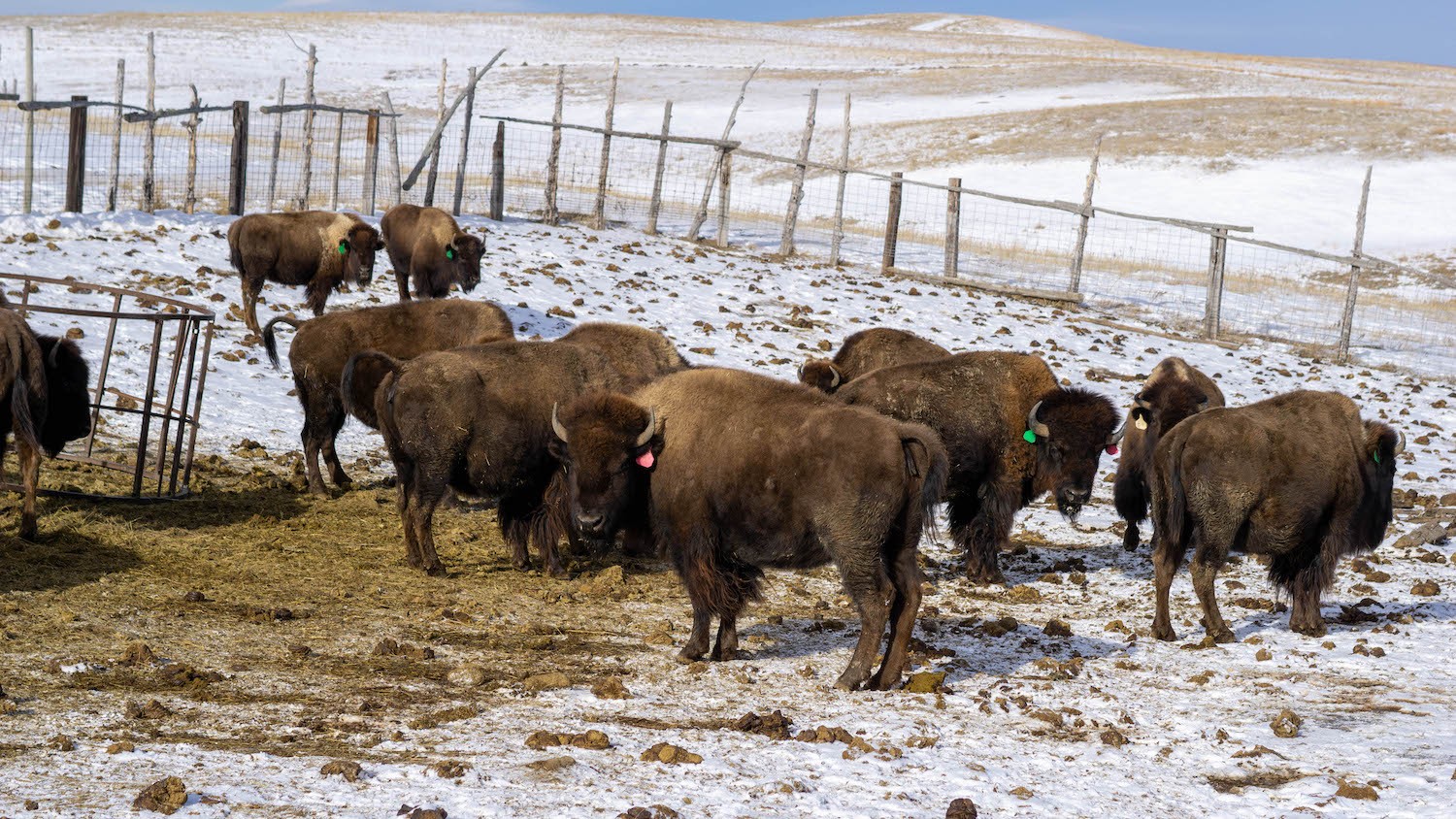
The Knife Chief herd escaped from their pasture, so they’re temporarily confined to a holding pen on the ranch until the fence can be repaired
Arlo Iron Cloud
Tilsen and his business partner, Karlene Hunter, are social entrepreneurs committed to making life better for the Oglala Lakota people. Before they began NANF and Tanka Bar in 2006, Tilsen had founded KILI Radio, the largest reservation radio station on the continent, and the pair had built Lakota Express, a successful direct marketing business on Pine Ridge that raised more than $21 million dollars for Oglala Lakota College. Even though they were successful, their efforts weren’t enough to spur substantial economic growth across the reservation. Their intentions with NANF were to not only respectfully and appropriately restore the buffalo and grow the Pine Ridge economy, but to introduce other tribal foods to a national audience as well.
With no background in the food business, they were admittedly naïve. “We were too dumb to know we couldn’t do it, and we learned lots of hard lessons,” says Hunter. “But we had some really good triumphs when the product went national and got national media and exposure. It wasn’t just our company. It was a Native product, and Native people were so proud. And that’s what we wanted. We wanted people to take ownership and to really participate in it.”
“We didn’t know we were going to be fighting off major conglomerates. I mean, we’re a small Native company.”
Business was good the first few years, but then the big corporate guns rolled into town. “We didn’t know we were going to be fighting off major conglomerates, I mean, we’re a small Native company,” says Hunter. “And these conglomerates came in full-force. We didn’t know that would happen. We were naive.”
The cultural synchronicities between Niman and Tanka lend an air of predestined inevitability to their story: both were founded by entrepreneurs who saw not only a business opportunity, but a chance to do social good. Both have struggled financially, and both are mission-driven, committed to rebuilding rural communities and successful family farms. Both believe in good stewardship of the land, animals, and people, and in bringing young farmers back to agriculture. And both have new, younger leadership at the helm—Sherman as CEO of NANF, and Oliviero as GM of Niman Ranch.
When Niman Ranch was acquired in 2015 by Perdue Farms, one of the largest vertically integrated poultry companies in the world, its financial challenges came to an end, but the corporate memory of those lean days of struggle to pay employees and distributors is still present. That history appeals to NANF’s leadership, who have shared the same set of sleepless-night-inducing difficulties, only magnified by the lack of access to affordable and ready capital typical of Native-owned businesses.
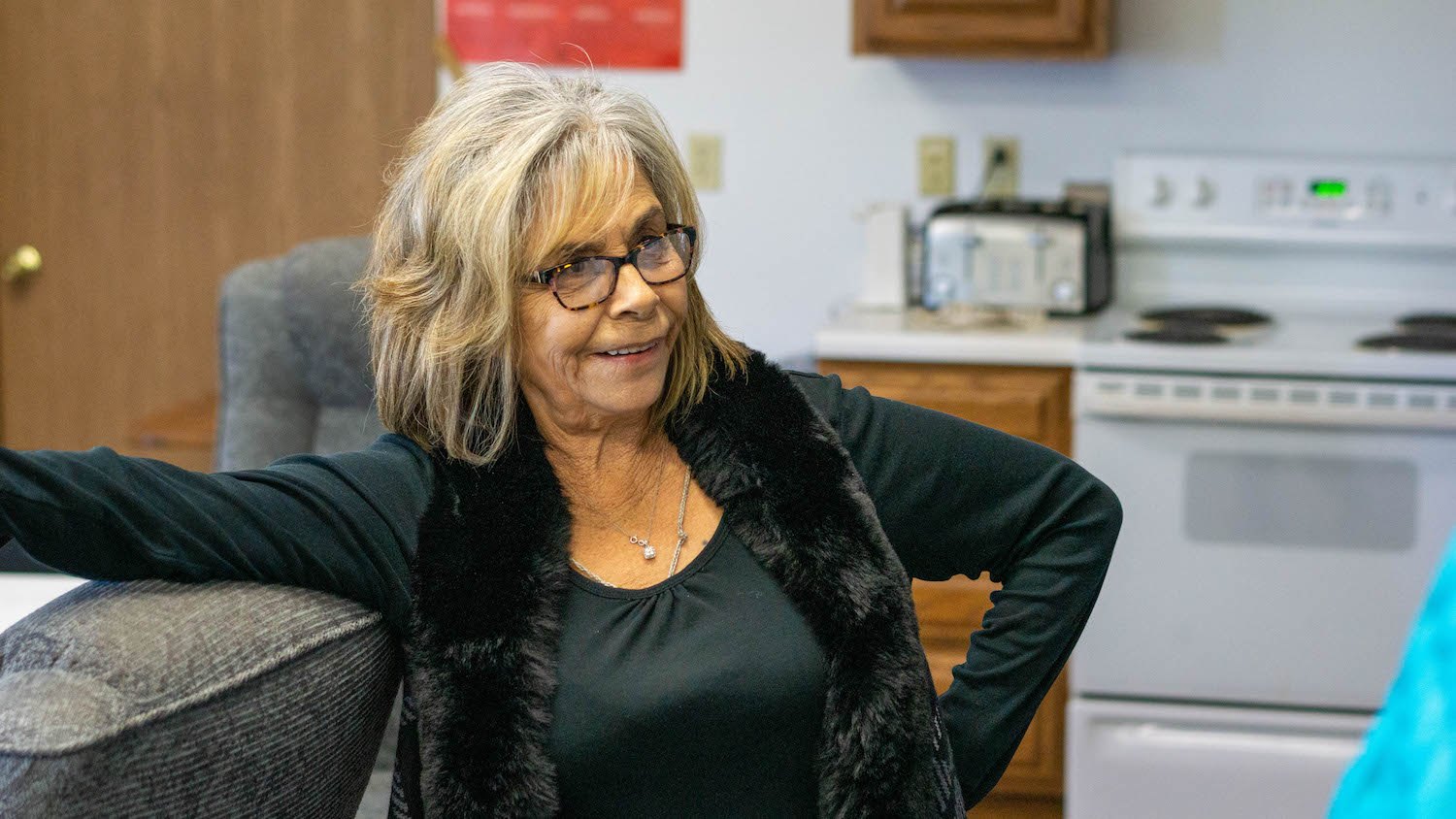
NANF co-founder Karlene Hunter at the Tanka headquarters in Kyle, South Dakota. The company is situated in the middle of the Pine Ridge Reservation
Arlo Iron Cloud
Niman Ranch’s Oliviero says the early discussions about collaboration were discouraging. “We were afraid they were too close to the edge of the cliff,” he says. Then, NANF started to gain traction with funders attracted by Niman’s offer of technical help. So far, the commitments from industry and social impact investors are relatively small, but the hope is that as the partnership evolves and grows, the money will follow.
Hunter says, “A lot of the time people will come in and say, ‘Well, sure, we can help you out with money.’ But a lot of the time we need the technical expertise. We’re excited about all these new opportunities and new partnerships. It’s great to see passion, that there’s somebody who understands what we’re doing in the business.”
Niman Ranch has built a network of family farms that produce pork, lamb, and beef. The company offers contracts to its producers, all of whom are Certified Humane, and some of whom have certifications from Global Animal Partnership and/or the USDA organic program. That expertise in building farmer relationships is invaluable for TRAC. With NANF’s ability to extend contracts to members of the TRAC producer group and assist them with certifications, marketing, and other best practices, Tilsen hopes that eventually, Tanka Bar will be able to build a 100-percent Native supply chain for buffalo. And because the company uses only a portion of each carcass, the other premium cuts can provide a fresh bison supply to Niman Ranch, which has long been interested in adding bison to its product line.
“We have to pay close attention to the cultural aspects of it all and approach it with respect and mindfulness for the spiritual, ecological, economic, and physical pieces of it.”
Last year, Panorama Beef, an organic grass-fed beef program, joined the Perdue Premium Meats group, and working with TRAC and Native cattle producers creates another layer of symbiosis with the NANF/Niman partnership. “Panorama adds to the story,” says Oliviero, “and gives us a chance to do something much sooner to demonstrate [to tribal producers] what it’s like to do business with Niman Ranch.”
Tilsen also sees TRAC as a means of offering other services to producer members. Finding lenders, supply forecasting, ranch planning, and capital investments in equipment and infrastructure could all be benefits of co-op membership. That’s where the Tanka Fund plays a role. Dr. Trudy Ecoffey is the incoming executive director. She says her first steps will be “to do some serious listening and learning what’s needed by producers. We have to pay close attention to the cultural aspects of it all and approach it with respect and mindfulness for the spiritual, ecological, economic, and physical pieces of it.” She’ll then develop a strategic plan and a capital campaign to raise funds. The nonprofit has already provided grants to ranchers for infrastructure, like solar wells and fencing, and contributed to the construction of Charging Buffalo Meat House, the only processing facility on Pine Ridge.
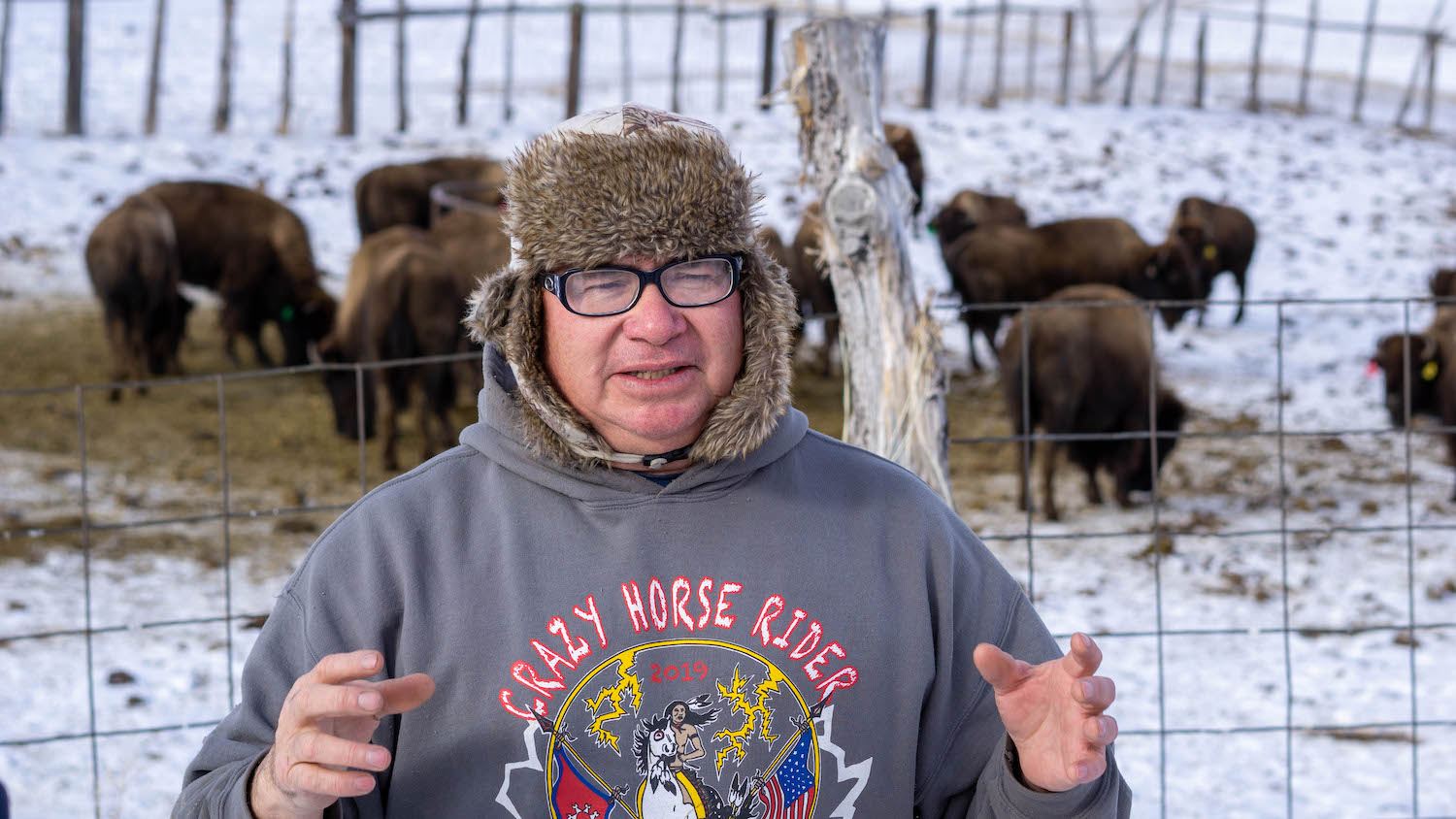
Charles “Bamm” Brewer, Jr. details the challenges of raising buffalo on the reservation
Arlo Iron Cloud
Charles “Bamm” Brewer, Jr. manages the food program for One Spirit, a social services organization on the reservation. He’s also a buffalo rancher, outfitter, and self-proclaimed badass butcher. He runs the processing plant, which was funded by One Spirit. It’s a small facility, but Brewer and his employees butcher beef, buffalo, and game meats for the food program, the tribe, and individuals. The plant is what’s known as custom exempt, meaning it doesn’t yet have a commercial license or USDA inspection, but demand has already outpaced the space.
Now in its second year of operation, the plant has provided an on-the-job education for Brewer and the crew. He’s learning how to charge appropriately for services, work efficiently (the plant layout has a few issues with the way the carcasses are moved through), and how to provide for the community. But running a processing plant that’s hours from the nearest city is challenging.
Brewer, an effusive bear of man with a hearty laugh, tells us how his walk-in cooler went on the blink the day before. He ended up on a ladder outside the building on a 20-degree day in the frigid wind, Facetiming with a technician in another state and holding his phone over his head so the tech could see the inner workings of the control box. He couldn’t diagnose the problem, so it would be several days before someone could show up to fix it, providing that the unpredictable winter weather allowed somebody to get there.
Brewer is passionate about and committed to raising buffalo. He has what he describes as a sharecropper relationship with the tribe. He gets cows from the tribal herd and he returns 40 percent of the calves back to the tribe. It’s a program that works well on his 800 acres, until he has problems with the fence. A wildfire took out the fence that separates his buffalo from the tribe’s, and he lost all of his animals. His sons encouraged him to start over with buffalo and not cattle. “I was never so proud of them,” he says. “I took my family back into the buffalo world, and now I want to bring it to the people. I’d rather be known as the guy who brought the buffalo back to the people, instead of the burritos and hotdogs.” The Tanka Fund helped him build a double fence to replace the one that was lost. “Next time we’re gonna build a wall,” he laughs.
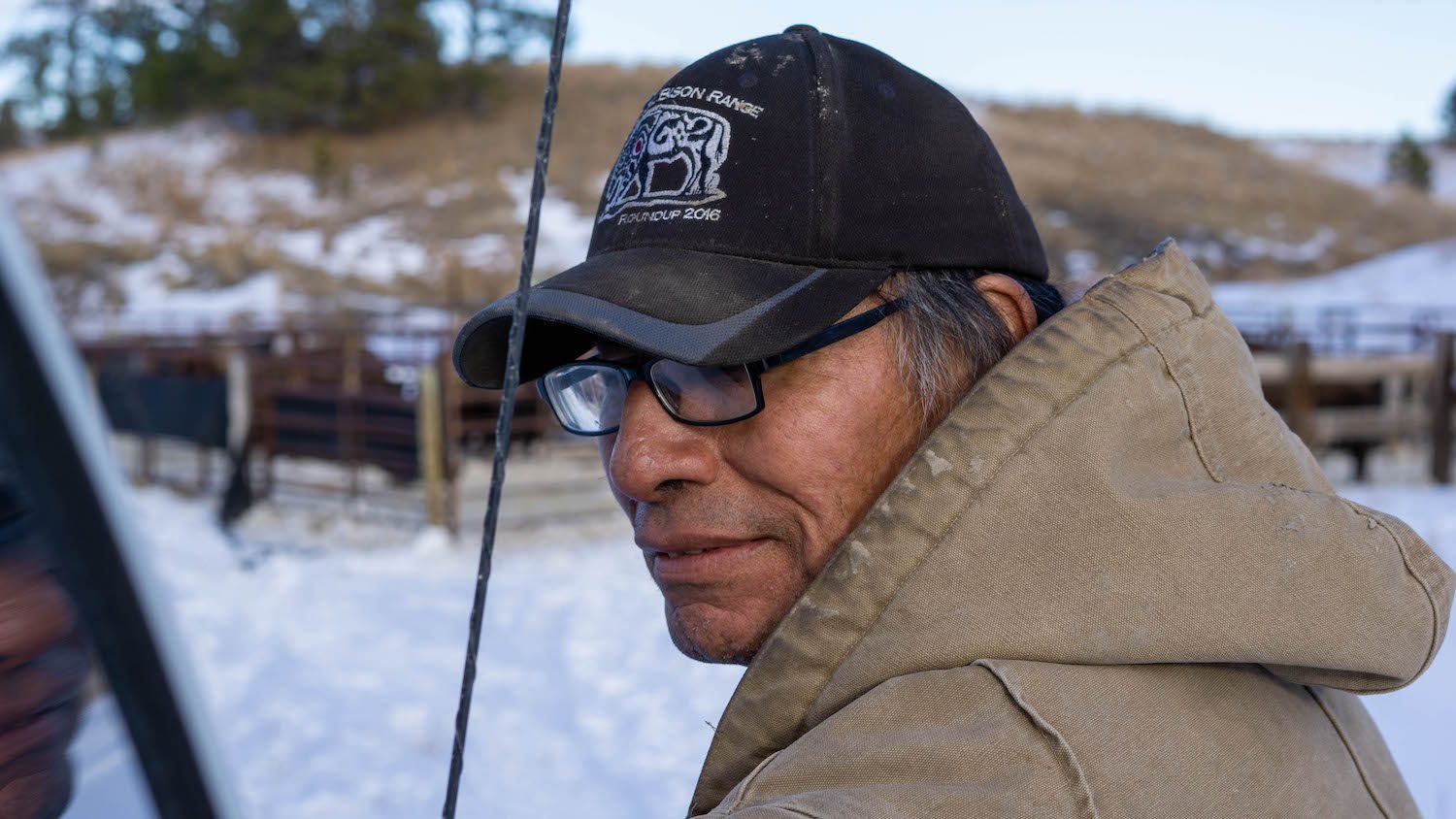
One of Ed Iron Cloud’s goals is to educate the community about the buffalo’s cultural and spiritual significance to their lives
Arlo Iron Cloud
Ed Iron Cloud is another beneficiary of Tanka Fund’s grant program. He leases 900 acres for his cultural herd, although he does sell some of his animals commercially to raise money for his nonprofit, The Knife Chief Buffalo Nation Society. His goals are to restore the relationship between Pte Oyate, the Buffalo Nation, and the Oglala Lakota Nation and to educate the people about the buffalo’s cultural and spiritual significance to their lives. Tanka Fund helped him build solar wells and fencing.
The day we visited, his small herd was in a pen because they had broken through a section of the pasture fence the day before—buffalo are notoriously hard to confine—and he had to round them up from his neighbor’s land. Lacking a way to haul them himself, he relied on a friend with a horse trailer who brought them in two loads down the rutted and snow-covered track that euphemistically could be called a road. The cows and their calves seemed somewhat agitated at their fate, but until the fence is made buffalo-proof, they’ll stay in the pen. Iron Cloud said it will give him a chance to sort them and decide which to sell.
The trough at the solar well on the hill above the pen was frozen solid, but, using a maul, Iron Cloud broke through the ice to free the pump, and then, using an empty plastic bottle and several miles of duct tape—and the help of the Tanka crew—he rigged a hose system to get water to the animals below.
That juxtaposition of modern technology with farmer ingenuity and teamwork, under the watchful eyes of an ancient keystone species of animal, is an apt metaphor for the restoration of the buffalo to Lakota lands. Technology, ingenuity, and teamwork can help both the buffalo and the people thrive again, but there’s still one big obstacle, the 2,000-pound bison in the room, if you will: Access to land, with its attendant benefits, like capital and the ability to build infrastructure, are a critical piece for both TRAC and tribal citizens.
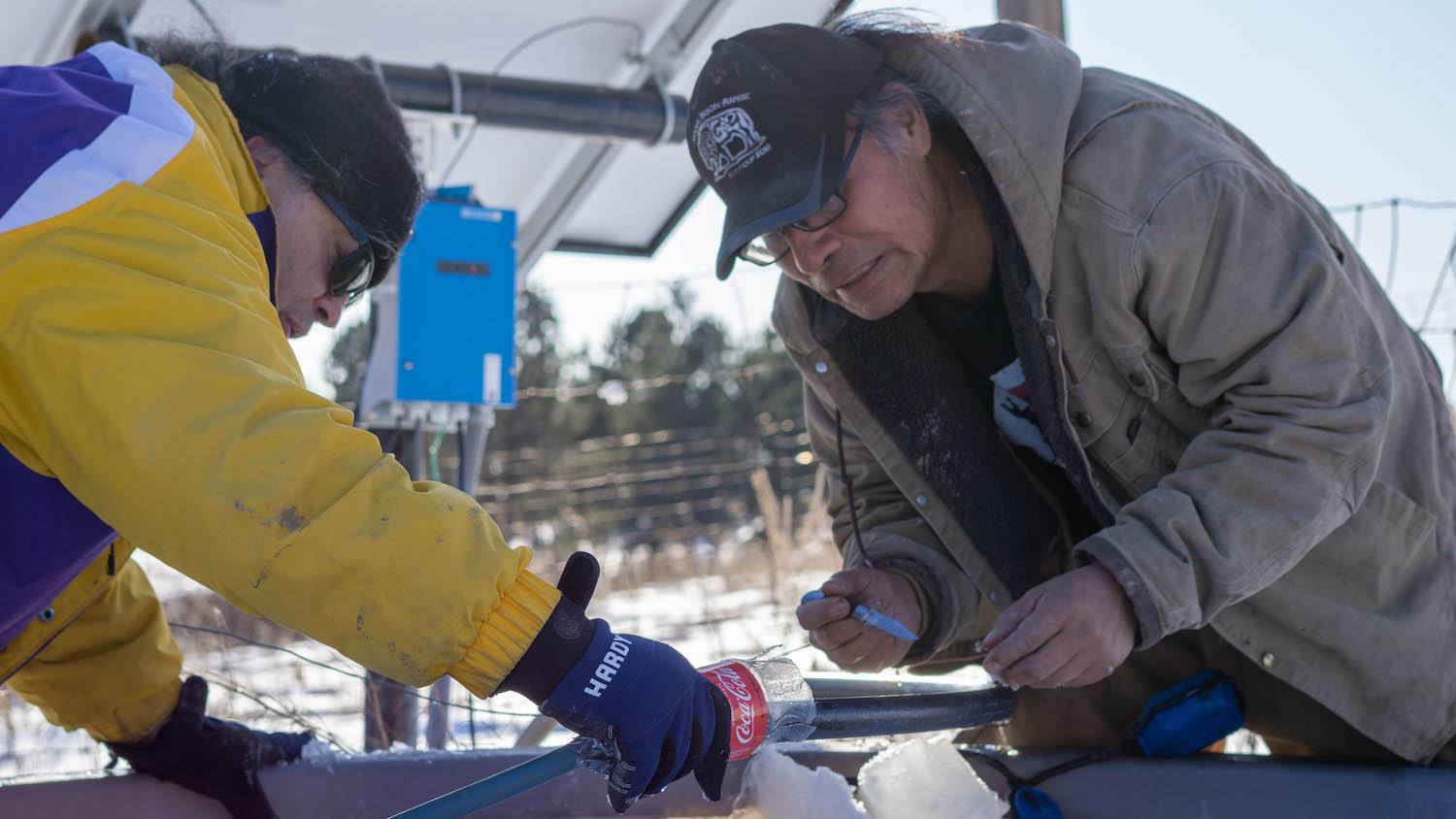
Arlo Iron Cloud Technology, ingenuity, and teamwork can help both the buffalo and the people thrive again, but there’s still one big obstacle: access to land and capital
Arlo Iron Cloud
Aner Ben-Ami is the co-founder of the Candide Group, an impact investment advisor that’s bringing funding from the Libra Social Investment Fund to NANF. He cites several reasons that NANF and Tanka Bar are attractive: The management team is small, but dedicated and resilient; the product is the best in the meat snack category; and the story of Tanka Bar is authentic and compelling, with Native ownership, a product based on a Native recipe, and a mission to drive economic revitalization in some of the poorest counties in the country. He also feels that Niman’s contribution of expertise, especially in telling the story of the brand, is important to the success of NANF and its three entities.
“We believe Tanka should be able to re-build its market presence and become a strong brand in the meat snack category,” he wrote in an email. “TRAC may be a slower process as it implies getting ranchers who are currently raising cattle to start ranching buffalo. I imagine that’s not a quick/easy decision for some folks. But, as Tanka Bar grows and is able to show ranchers that it is a reliable buyer/off-taker for their bison, we believe TRAC will grow. This (TRAC’s expansion) is one of the most exciting elements of the Tanka’s long-term vision from an impact perspective. It means that more bison are coming back to the land and more Native ranchers are participating in the success of Tanka Bar. And, with the way our investment is structured, it also means that TRAC can buy our shares over time and become part-owner of Tanka Bar.”
“When people buy bison they become a part of the story, because when they buy it, they help restore it and save the prairies.”
Bob Dineen of Rocky Mountain Natural Meats, the largest bison processor in the country and a long-time supplier for Tanka Bar, has also joined this round of investment. “Our hope is that Tanka becomes a bigger part of the grocery landscape as a part of the meat snack niche. We would like to see Tanka on the top shelf. That’s our goal,” he says. He also believes that the success of the Tanka Bar brand will enable the company to achieve its other goals: employment on the reservation, successful bison ranchers, and the restoration of the bison and the prairie. “It’s the greatest conservation story ever,” he adds. “When people buy bison they become a part of the story, because when they buy it, they help restore it and save the prairies.”
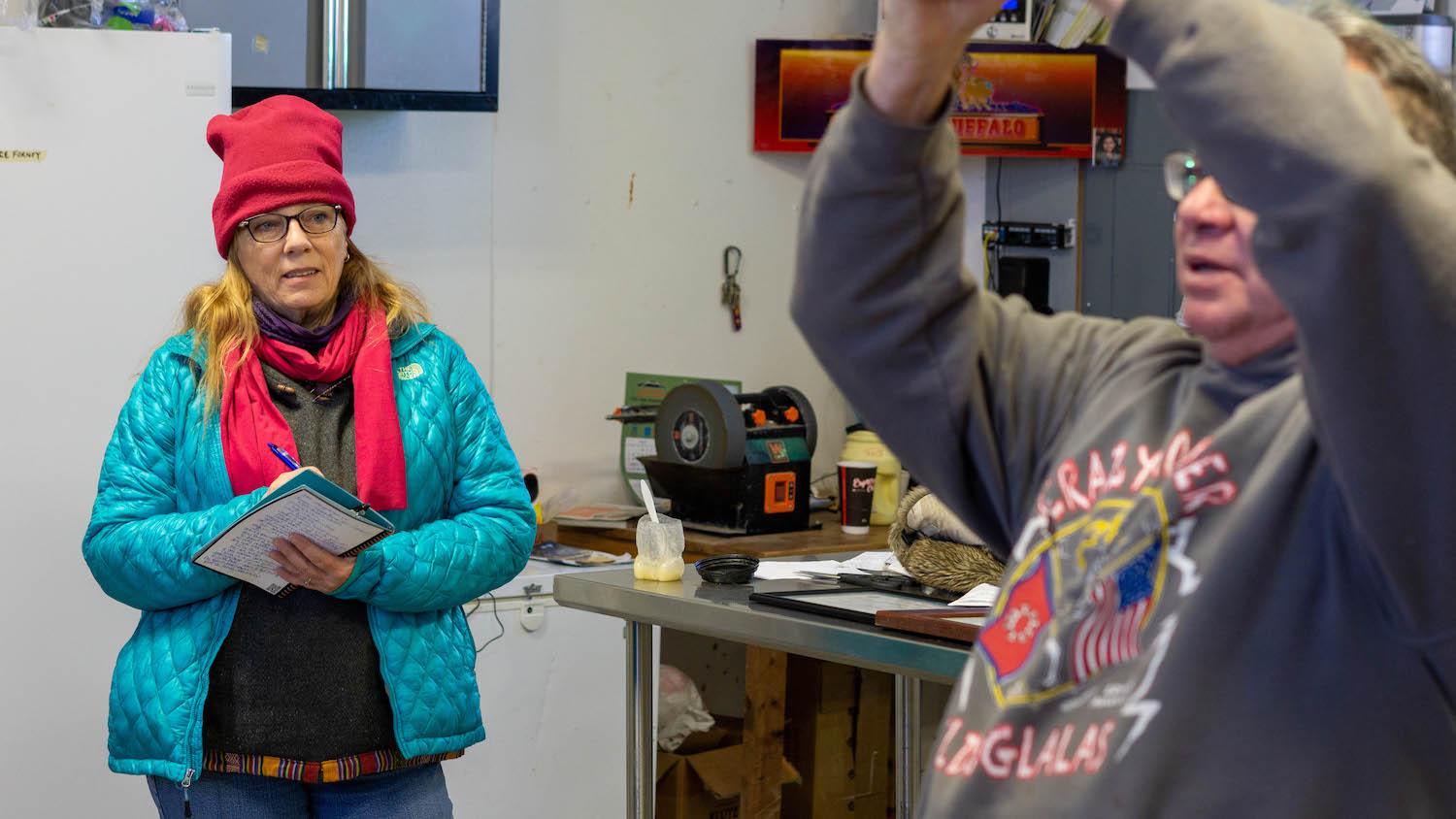
The Counter contributing writer Marilyn Noble spent several days in mid-January with Tilsen, Hunter, Iron Cloud, and Brewer, learning about their work
Arlo Iron Cloud
Clearinghouse CDFI was an early supporter and funder in the nascent years of Tanka’s existence. CEO Doug Bystry says, “This loan is one of the most important in our portfolio, and our relationship with Tanka Bar is one of our most important. I’m so proud of Mark, Karlene, and Dawn. Most businesses would have thrown in the towel by now, but you won’t find people who have worked harder and sacrificed more.”
Hunter and Sherman credit the partnerships and relationships they developed along the way with customers like REI and Natural Grocers, vendors like Rocky Mountain Natural Meats, and investors like Clearinghouse CDFI for keeping them afloat and helping them learn the vagaries of the food business. With the addition of the Tanka Fund and TRAC, along with the partnership with Niman Ranch, Hunter believes the company is turning a corner. “We’re hoping we can get it rolling,” she says.
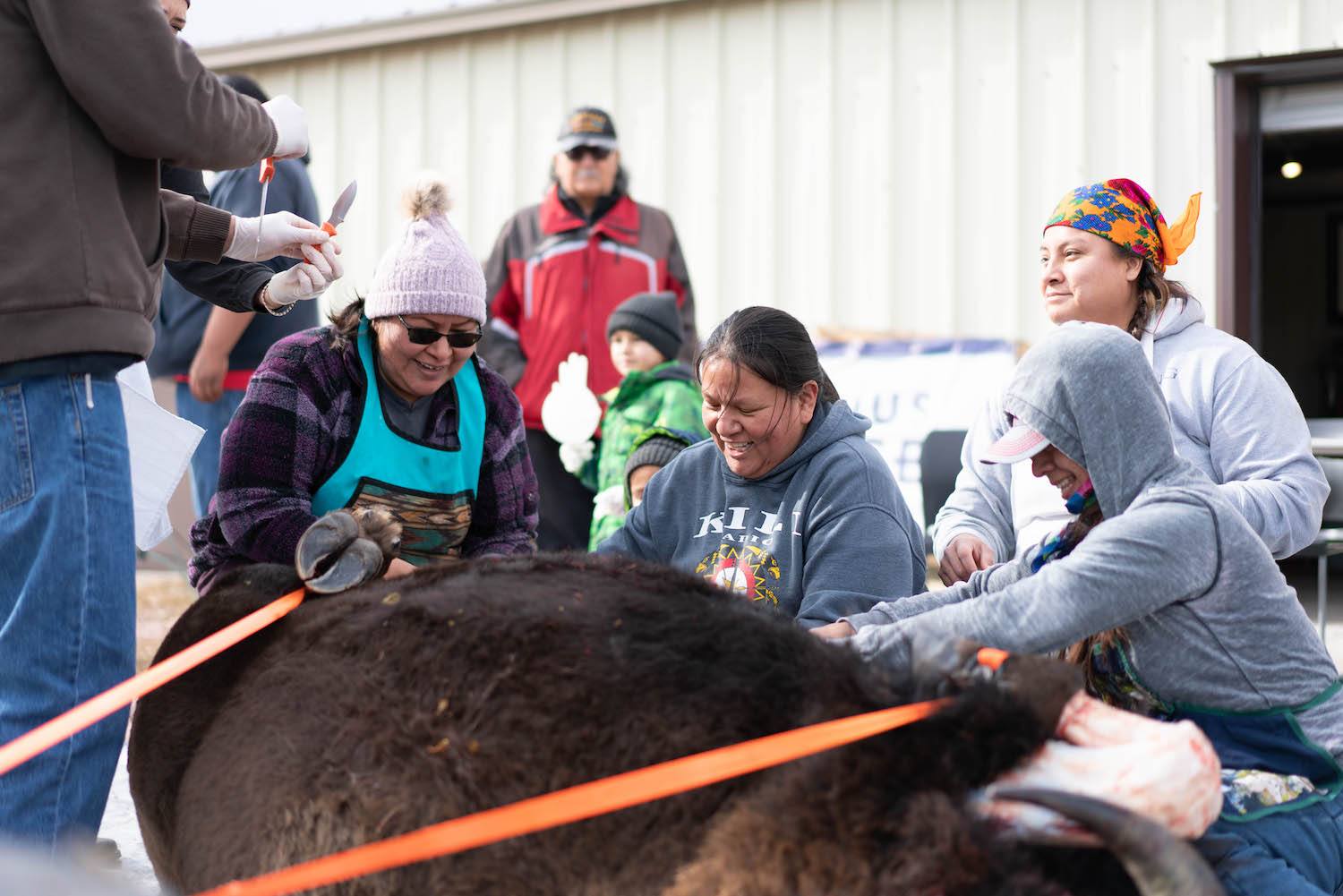
Oglala Lakota women are learning how to forage for and cook with indigenous foods and butcher bison according to tradition
Arlo Iron Cloud
With a new generation of leadership in place at NANF—Sherman as CEO and Ecoffey as the executive director of the Tanka Fund, Hunter and Tilsen are able to focus on growing the various components of the business.
Everyone I talked with agrees that restoring the bison has benefits both tangible—economic growth, soil restoration, new supply chains—as well as intangible for Pine Ridge. A regenerated and renewed Tanka Bar is one key to that restoration. The efforts of NANF and the success of Tanka Bar have already inspired other young entrepreneurs like Nick Hernandez, founder and CEO of Makoce Agricultural Development, in his efforts to bring farms and food hubs to Pine Ridge to establish food sovereignty. Lisa Iron Cloud is building a business teaching Oglala Lakota women how to forage for and cook with indigenous foods and butcher bison according to tradition. Brandon and Kim Braveheart have created a Rapid City, South Dakota catering business that features local and Native foods.
Sherman sees good things ahead for NANF. As the Tanka Bar regains its place in the retail landscape, she sees the possibility for NANF to market additional Native food product lines, both from Oglala Lakota companies and other tribes. She sums it up: “The buffalo is resilient. It puts its head down and faces into the storm until it passes. The same is true for the people, and the same is true for Tanka Bar. We’ve been facing into the storm, but now it’s passing, and we’re resilient.”
1 comment:
Wishing you all the best!!
Post a Comment